Regeneration Stories: The Comeback of a River and Ecosystems
Three true tales of transformation to inspire, uplift and restore YOU- How restoring water, wisdom and the wild helps restore humanity and why we need to value nature's ecosystem services
Hello, welcome in Wildlands. I’m really glad you are here.
We’ll explore, discover and celebrate regeneration and gratitude. There’s a beauty-full tale to tell. It’s starts with a dream and a poem. Then, true tales of renewal in reality: Humans restore soils and souls and demonstrate Love in Action.
It’s not the end, it’s the beginning, dear friends!
ReNewAll an original poem by Robin Motzer Once upon a time, land and waters were clean. Then came industry and government minds and hearts became mean. They poisoned the people, nature and all her beings. A new day is upon us and it’s time to spread our wings. No fear! My dear, Re-member, Friend to self first, Breaks their evil curse. We have the power and purpose is key- We must rely on you and me. Be a catalyst and the Light- Heal within and stop the blight. Restore reciprocity- interconnection with the other. It can be done by nurturing nature like a loving father and mother. It takes a village to restore soils and souls- Come One, come All and create compassionate goals. Bliss is to celebrate making Anima Mundi great again! Oneness is natural — we can restore the world of Zen. ReNewAll, an original poem by Robin Motzer, aka Loud Hawk, A Poet with a Purpose.
Good News for Anima Mundi: regeneration nation- humans, animals and plants restore soils and souls!
The Recovery of Raccoon Creek
Ohio Governor Mike DeWine and Ohio Department of Natural Resources (ODNR) Director Mary Mertz, designated Raccoon Creek as the 16th state scenic river in Ohio, a first in the state’s southeastern region, with a designated 111.9 river miles that flows through three counties.
For many years, Raccoon Creek was considered by many to be “unrecoverable” due to acid mine drainage and sedimentation throughout the watershed caused by more than 70 years of coal mining. Area residents have pushed for a coordinated effort to restore the waterway since the 1970s. Since then, ODNR has completed 20 projects.
In order to join Ohio’s scenic river system, waterways must be 75% free-flowing and not impacted by nearby commercial development.
Approximately 942 river miles are now protected in the state scenic rivers system, along with three national scenic rivers- the Big and Little Darby creeks, Little Beaver Creek, and Little Miami.
“These projects include the removal of mine waste piles and the creation of limestone channels, leach beds, and wetlands. We hope this designation will serve as a model for other watersheds.”
“Once considered 'nearly lifeless', Raccoon Creek is now home to more than 90 species of fish and serves as an example of what we can achieve when water quality is prioritized at the state, local, and federal levels.” — Ohio Governor Mike DeWine and Ohio Department of Natural Resources (ODNR) Director Mary Mertz stated.
The government-industry regulatory complex loves to pat themselves on the back when they clean up their messes. We are grateful that they took responsibility, probably using our tax dollars.
It’s time to for our government to stop pandering to greed and agendas and honor our interconnection with All. Power to the People, and to policies that work for justice for All.
Let’s keep the celebration alive! Here’s more good news! Right, Rocky Racoon?
Researchers find pocket gophers are responsible for recovery of Mount St. Helens ecosystem, and that they are beneficial components of ecosystems.
Biologists estimate that one pocket gopher can move the equivalent of a ton of soil per year, which helped bring beneficial bacteria and fungi that survived the eruption closer to the surface.
Pocket gophers, typically regarded as nuisances, played an essential role in aiding with plant regeneration in the landslide and eruption zones.
"We further hypothesized that the presence of animal dispersal vectors, such as the pocket gophers, will influence mycorrhizal guilds, community composition, and soil biogeochemical processes because of preferential foraging and other behaviors, including bioturbation, elimination (e.g., fecal deposits), and soil translocation," researchers stated.
In an area of land that was clear cut before the eruption and void of most animals and vegetation, the ecosystem still appears to be struggling more than four decades after the event.
Pocket gophers move enormous amounts of soil every year, therefore help to aerate the soil. Worms, reptiles, and many other beings, also help soil health. This is especially important when soil has been compacted by grazing livestock, drought, toxins, machinery and development. Their tunnels also serve to capture snow melt and rainfall that would otherwise run over the soil surface, cause erosion and flooding. Abandoned tunnels provide habitat for a number of other species, and the waste left behind by pocket gophers fertilizes the soil.
In research published in Current Biology, not only do the little critters eat the roots, but they also “root crop” growth in their tunnels. Dead plants are eaten, removed and they help soil heterogeneity, the soil’s physical and chemical properties. The authors present that the pocket gophers may be farmers because they provide conditions that favor root growth.
They are the only natural force that seems to be able to limit the growth of quaking aspen—they can chew the root systems back faster than they can grow back.
Areas that are impacted by human activities may require additional interventions to restore their soil and nutrients. Nature and her beings provide ecosystem services that save trillions of dollars and lives. To be stewards, we must work with nature for reciprocal benefits that include nature’s rights and a value for each of nature’s services in our human-created systems, including economic development and restoration.
The desert pocket gopher is the most threatened species because it occupies a very small range and is thus more vulnerable to habitat loss. Let’s honor our workers homes, they have a purpose and a job to do- for me and you!
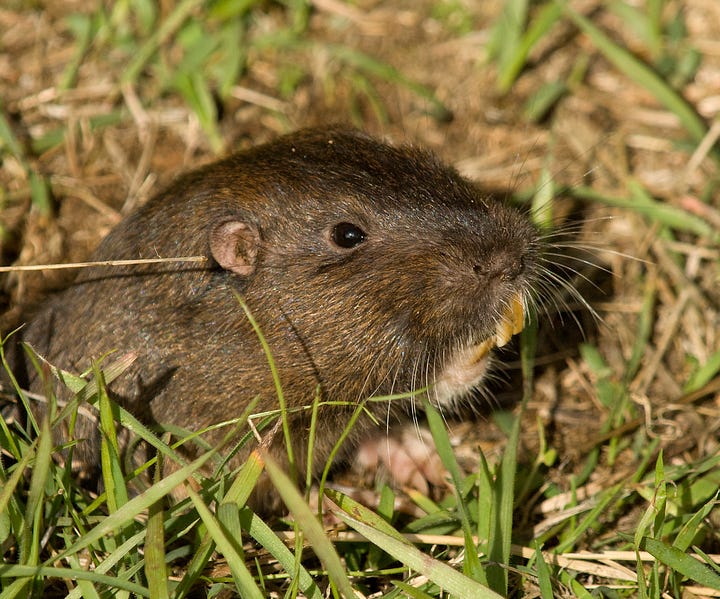
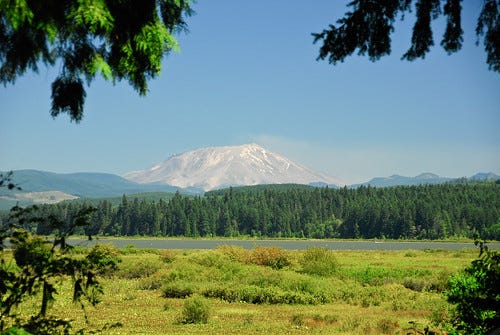
Scientists discovered that nature recovers quickly, building new and thriving habitats. Humans can help recovery with sensible choices by being good stewards of the biota.
A complex mosaic of habitats emerged after the eruption. The diversity of life at Mount St. Helens today exceeds that of the pre-eruption landscape.
The same long-term ecological studies finely tuned at Mount St. Helens are now used to assess volcanically disturbed regions worldwide.
About Robin
I asked, what do you want restored? And you answered. You have spoken for “Marine Life, All life, Dark Skies, Spectalcase Mussel, and Bees”.
My porpoise is to help fix health, food, environment for All and restore the Biota!
Please support Wildlands to help grow gardens for traumatized children, native pollinator and food gardens, increase access to healthy food in communities and support local farmers and markets. Occasionally, simple, healthy plant-based recipes are shared.
My work with animal advocacy is helping to stop the corruption of animal organizations. And, I help care for wildlife too injured to return to the wild.
Read about my meeting with a world-renowned U.S. Economist: I speak for the biota, I am advocating for necessary paradigm shifts to establish an accounting system that values the services of nature and her beings.
Regeneration Nation: to inspire health, well-being and restore soils and souls. Shift paradigms, increase and celebrate interconnections to reduce harm.
I offer health and well-being research and/ or experience-backed essays.
Advocacy for the biota takes many skills and a generosity unfamiliar with those addicted to consumerism. My special bond with wildlife, domestic and farm animals and their homes are a special focus. I know how to work with local and state leaders and I have spoken at Council meetings and on the floor of a State Agency and a State Capitol. A Senator called to thank me for helping him protect animals, specifically bears. I worked with another Senator to protect the license of a wildlife organization. I’ve also helped get a ban on wildlife killing contests. And more!
There have been several success stories in reducing harm that I am blessed to share beauty, good and what’s true. I’ve transformed trauma, including my own.
My specialty is telling true tales of transformation to inspire, uplift and restore YOU!
Let’s make Anima Mundi great again. It takes a village to restore soils and souls.
Need more info, read my Guest Column.
The 3rd true tale of transformation comprises of some before, during and afters of one of Sustainable Tucson’s Habitat Restoration collaboration with Community Gardens. We worked with Tucson’s school gardens. ST’s Habitat Restoration group also supported a small local nursery. Supporting small, local businesses and utilizing natural building materials are a part of the group’s ethos.
We created native pollinator gardens next to organic food gardens at a school for traumatized children and also in communities. Organic land care composts, water harvests, leaves the leaves, twigs and other plant materials to cover the soil. Plants are also placed to protect from pests, shade and enhance one another nutritionally and help root and create healthy soils. Swales were dug to help slow and retain moisture for the plants and trees. Water usage is reduced, thus helping to restore waterways. No toxins, plastic bagging and no sending nature’s nutritional refuge to landfills and waterways.
Ensuring interconnection is nature’s insurance. Unlearn, relearn and be of service with Wildlands. We’ll go into more detail in future essays on how life gives us multiple opportunities to serve others and how it blesses us. Symbiosis is Love in Action.
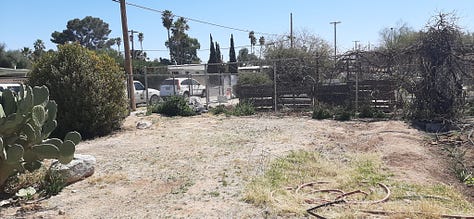
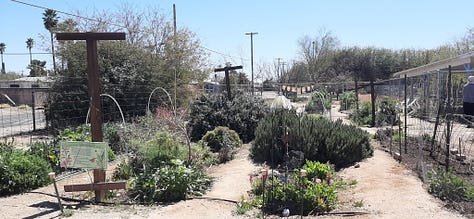
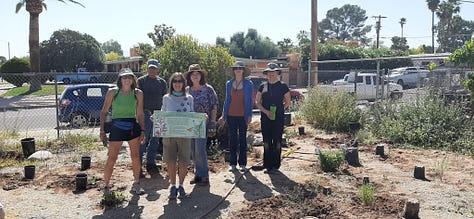
If rivers, ecosystems and species can restore, we can restore self and otters, too. Governments may be catching on how rewarding this work is. Let’s help them restore, please join me.
Please provide some light, whether through networking, collaborating, funding or helpful ideas. I am grateful for your support.
Let’s restore ethics to the corrupt animal retail complex. “Help re-tail retail”
“The proof that one truly believes is in action.” - Bayard Rustin
“Be Love in Action.” -Robin, I AM Loud Hawk, A Poet with a Purpose, One who gets things done.

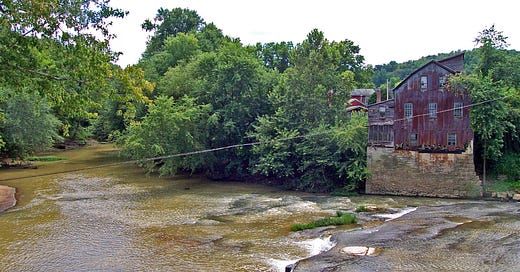



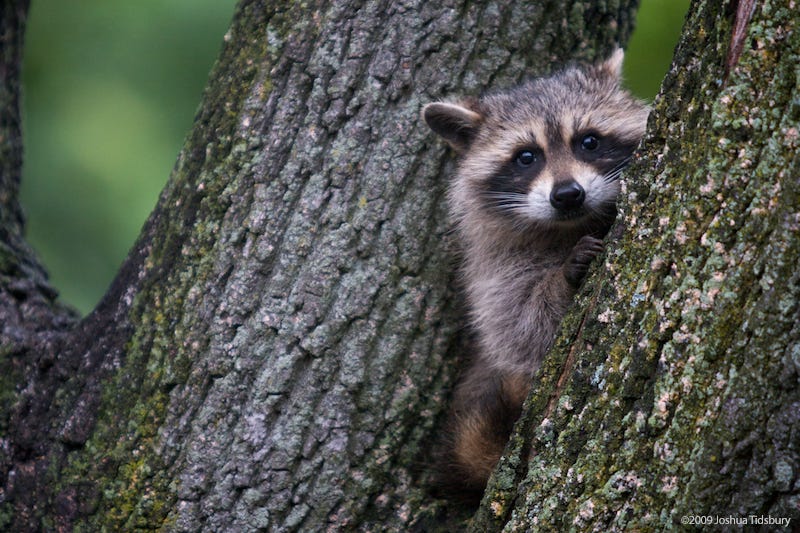
I especially like the information about the pocket gophers and the recovery of the Mount St. Helens ecosystem. That is amazing how Nature not only recovered, but improved conditions from the pre-eruption days. Thanks for sharing, Robin.
https://www.desertmuseum.org/books/nhsd_gophers.php
Dear beloved NATIVE creatures are the pocket gophers who live in my gardens aerating the soil and providing nutrients for trees and plants. Sadly, they are persecuted by some who poison them and other NATIVE species